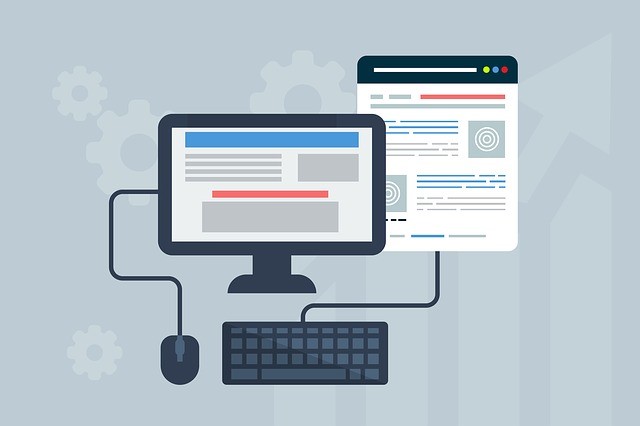The speed at which technology is transforming may seem like it’s straight out of a science fiction novel. As more and more funds are allotted in research and development, professionals are constantly tinkering and improving existing technologies to get the most out of them. Below the 7 Incredible Technology Trends to Watch Out For In 2021.
To keep yourself and your business updated with this intense pace of development, you have to gather a solid understanding of the Incredible Technology Trends. In this case, Gartner has predicted some Incredible technology trends that may see the light of the day in 2021. Let’s explore more on these trends through this post.
Table of Contents
1. Cybersecurity Mesh
Most organizational assets now go beyond physical and logical security perimeters. Hence, businesses need a “cybersecurity mesh” that allows anyone to access any digital asset securely, Irrespective of the location of the asset and the one accessing it.
This cybersecurity system would separate policy enforcement from policy decision-making through a cloud delivery model. This enables putting the security perimeter around the individual rather than around the organization. Gartner suggests that by 2025, the cybersecurity mesh will handle nearly half of digital access control requests.
2. Privacy-enhancing computation
Maintaining organization data privacy has become more vital than ever, and new regulations will compel organizations to be more concerned about privacy protection. The report from Gartner highlighted new methods for delivering privacy like differential privacy and trusted execution environments. These are now offered on some CPUs and by the major clouds. Privacy enabled computation will allow search on encrypted data, and protect data when outsourced providers are using it or when sharing with untrusted partners.
Gartner highlights that by 2025, many organizations will integrate privacy-enhancing computation for processing data in untrusted environments and multiparty data analytics use cases.
3. Anywhere operations
“Nowadays, organizations have consumers everywhere, employees everywhere, and a bunch of different services that again can be anywhere”, opine esteemed IT assignment help experts online. This calls for an IT operating model that embraces remote operations and virtual delivery of services. It’s more than simply working from home or interacting with consumers virtually. It also delivers unique experiences across five areas:
- Collaboration and productivity
- Cloud and edge infrastructure
- Quantification of the digital experience
- Safe remote access
- Automation to support remote operations
By the end of 2023, Gartner anticipates 40% of organizations will blend virtual and physical experiences leading to increased workforce productivity and customer reach.
4. Distributed cloud
This essentially means the distribution of public cloud services to different physical locations. At the same time, the operation and governance of the services remain the responsibility of the public cloud provider. It offers a nimble environment for organizational scenarios with less data cost-reduction needs and data residency requirements. It also fulfills the need for consumers to access cloud computing resources closer to the physical location where data and business activities happen.
In the near future, it’s believed that most cloud service platforms will present at least some distributed cloud services that execute at the point of need. The distributed cloud can replace the private cloud and offer edge cloud and promote new uses for cloud computing. It’s believed to be the future of cloud computing.
5. AI engineering
To develop sustainable AI operations at scale, organizations will need AI engineering, which depends on three pillars: model operations, development operations (DevOps), and data operations. Companies should use DevOps principles to develop AI projects more collaboratively with more stakeholders involved. The stakeholders must execute these projects with more governance and exploitability upfront.
It’s believed that AI will expand across multiple disciplines, which include Model Ops, copositive AI, and generative AI. This will let developers create AI models quicker and allow these models to evolve dynamically. It’s best to hire companies that specifically focus on ai development services though versus a company that offers it as part of their portfolio.
6. Intelligent composable business
This trend is about adopting an application perspective and packaged business capabilities. These packaged business capabilities can be considered as chunks of functionality accessible through APIs.
The intelligent composable business comprises aspects like better decision-making and seamless access to data that transforms the way that businesses function. All this is required for flexible applications. And this can be delivered when there’s a composable approach to application delivery.
7. Internet of behaviors
The phrase “Internet of Behaviors”, first emerged in Gartner’s tech predictions for 2020. This is how organizations, whether private or government sector, are utilizing technology to monitor behavioral events and manage the data. This helps in upgrading or downgrading the experience to influence those behaviors. It includes facial recognition, location tracking, and big data.
In recent times, the ability to capture behaviors has improved considerably. This makes it possible to process behavioral events to perform things like measuring driving performance to change insurance rates, or to create credit scores.
Wrapping it up, Gartner’s observation also emphasized how the trends mentioned here can be combined and reinforced to create a digital world. Businesses should tinker with these trends at lower costs to create value and maintain organizational plasticity, at the same time.










